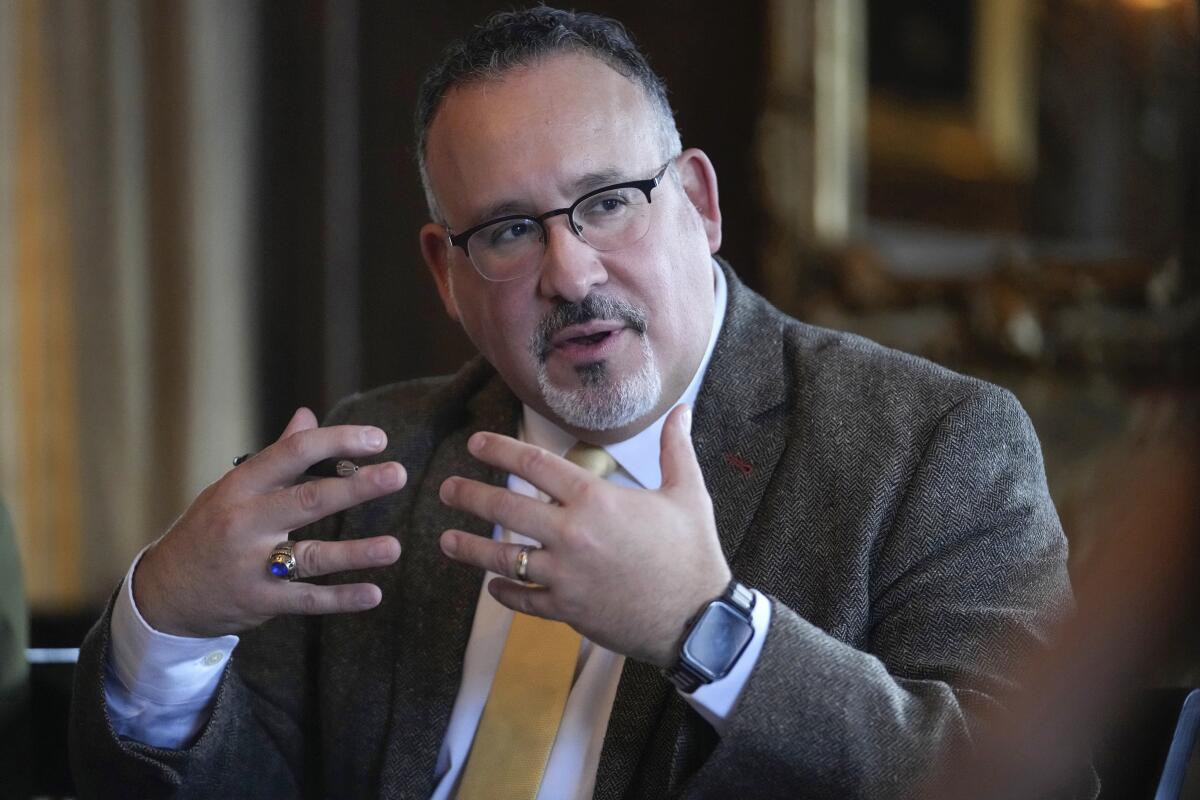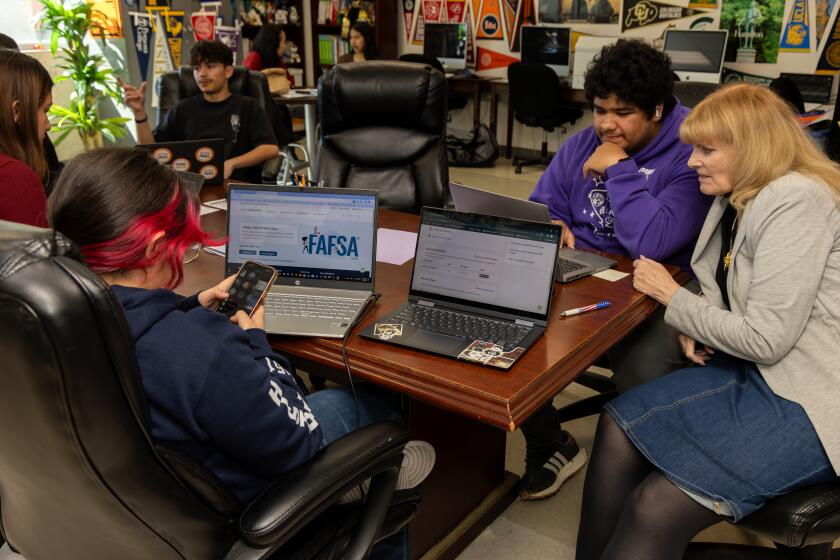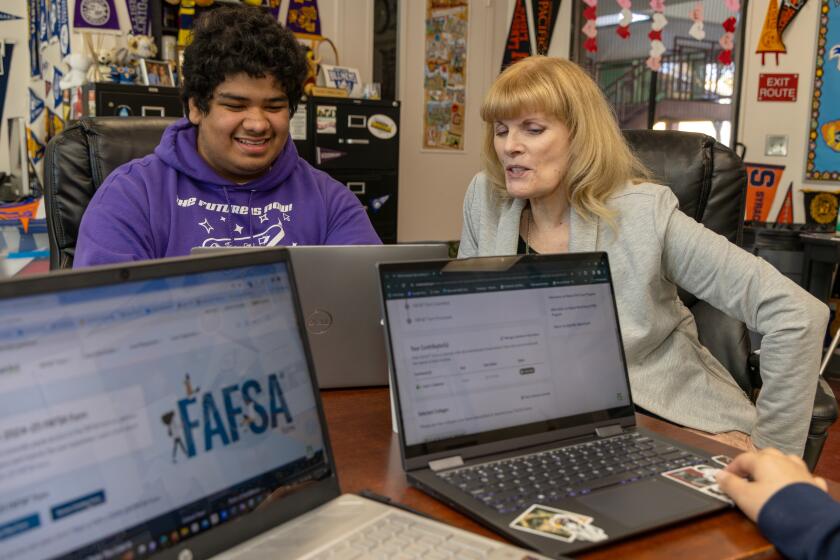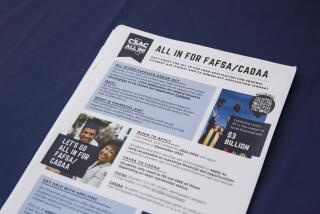Education Department starts sending financial aid data to colleges after months of delays

WASHINGTON — After months of delays and technical hiccups, some colleges and universities have started to receive federal data they need to put together financial aid offers for incoming students, the Biden administration said Monday.
The Education Department says it sent a first batch of student records to a few dozen universities on Sunday and is making final updates before expanding to more universities.
The delay has cut into the time schools usually have to assemble financial aid packages before the typical May 1 deadline for students to commit to a university. Many colleges have extended enrollment deadlines as they wait on the federal government, leaving families across the nation wondering how much financial help they will get with college tuition.
The Free Application for Federal Student Aid overhaul delayed the form’s usual rollout from October to late December. The department then soft-launched the new version to address lingering bugs in the system, but many families reported difficulties accessing the form.
The irony is that the new FAFSA is supposed to make things easier and faster but has resulted in the opposite. Federal education officials are scrambling to help.
Congress ordered the update in 2020 to simplify the notoriously complex form and expand federal student aid to more low-income students. The new application reduces the number of questions from 108 to fewer than 50, and it uses a new and more generous formula to determine eligibility for federal student aid.
The delays have had cascading effects across higher education. FAFSA information is used to award state and federal education grants, and schools use it to assemble financial aid packages for prospective students. In the meantime, families often have only a murky idea of how much they would need to pay, which can be a deal-breaker when choosing colleges.
Advocates fear the holdup will deter some students from pursuing higher education at all, especially those who were already on the fence.
Repeated delays have become a blemish for the Biden administration, which has blamed Congress for rejecting requests for more money to overhaul information systems and update the decades-old application process.
Republicans in Congress say the Government Accountability Office has launched an investigation into the administration’s handling of the overhaul.
A chaotic rollout of a new federal financial aid form is roiling high schools and upending college admissions, impeding students from filling out the all-important FAFSA form.
Every year, about 17 million students submit the FAFSA as part of their applications for financial aid. So far, 5.5 million students have been able to fill out the new FAFSA form, according to the department.
The department updated its formula to account for inflation, which will increase the amount of aid students are eligible to receive. But the initial release didn’t include the updated inflation tool.
In a letter to the department in February, more than 100 Democratic lawmakers pressed for answers on how the department planned to minimize the effect the delays have had on families.
“Any delays in financial aid processing will most impact the students that need aid most, including many students of color, students from mixed status families, students from rural backgrounds, students experiencing homelessness or in foster care, first-generation students, and students from underserved communities,” they wrote. “For institutions to support students’ ability to make informed decisions about their future, they need clear guidance and resources from the Department immediately on any and all next steps.”
Ma and Binkley write for the Associated Press.
More to Read
Sign up for Essential California
The most important California stories and recommendations in your inbox every morning.
You may occasionally receive promotional content from the Los Angeles Times.












